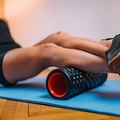
Pickleball is one of the fastest-growing sports in the country — and for good reason. It's fun, social, and accessible to players of all ages. But with its rise in popularity, we’re seeing more and more players dealing with a common issue: elbow pain, often referred to as tennis elbow.Even though it’s called “tennis elbow,” this condition is just as common among pickleball players. If you’re feeling discomfort on the outside of your elbow, especially when gripping, lifting, or swinging your paddle, you might be dealing with it too.Let’s dive into what’s happening — and more importantly, what you can do about it.
What Is Tennis Elbow (Lateral Epicondylitis)?
Tennis elbow is the irritation or degeneration of the tendons that attach to the outside part of the elbow. These tendons help control wrist and hand movements. Over time, repetitive gripping, swinging, and the vibrations from hitting the ball can overload these tissues, leading to small tears, inflammation, and pain.
Common Signs and Symptoms
- Pain or tenderness on the outside of the elbow
- Discomfort when gripping or lifting objects (even something light like a coffee cup)
- Weakness in the hand or wrist
- Pain with twisting motions, like opening a door or turning a key
- Stiffness or aching after playing, particularly in the elbow and forearm
What Causes It?
Several factors can contribute to developing tennis elbow while playing pickleball:
- Overuse
- Grip Size and Paddle
- Poor Technique
- Muscle Weakness
- Limited Mobility
How to Treat It
The good news? Most cases of tennis elbow can be treated successfully.
Here’s what helps:
- Modify Your Activity: You may not need to stop playing, but you’ll need to adjust frequency, intensity, or technique
- Gentle Stretching: Focus on wrist and forearm stretches to maintain flexibility
- Progressive Strengthening: Building up the forearm, wrist, and shoulder muscles gradually is key for long-term recovery
- Manual Therapy: Hands-on treatments can improve mobility, decrease muscle tightness, and help the healing process
- Bracing (When Needed): A counterforce brace worn just below the elbow can reduce strain during activity
How to Prevent It
Preventing tennis elbow is all about being proactive:
- Warm Up Properly: Dynamic movements and light stretching before playing
- Strengthen Key Areas: Work those forearms, but don’t forget your shoulders and core — they play a role too.
- Stay Flexible: Especially in the forearm muscles, helps ensure that your tendons aren’t overstressed during repetitive movements
- Work on Your Technique: Lessons or coaching can help ensure you're using proper body mechanics
- Allow for Recovery Days: Back-to-back hard playing days without rest increases injury risk
- Optimize Your Equipment : More on this below
Choosing the Right Paddle and Grip:
The paddle you choose can make a big difference when it comes to elbow health. In tennis, research shows that lighter rackets create more vibration, which can lead to elbow problems. Heavier rackets absorb more vibration but can cause fatigue if they're too heavy. Most tennis players do best with rackets weighing 280–300 grams.
In pickleball, we don't have the same depth of research yet, but we do know that most paddles weigh between 204–241 grams — lighter than tennis rackets. We also know that pickleball paddles are better at reducing vibration when compared to tennis.
What does this mean? Adjusting paddle weight, trying different paddles to reduce vibration and dialing in your grip size can help you protect your elbow.
When choosing a paddle:
- Look for features that help absorb vibration.
- Make sure the grip size matches your hand to avoid extra strain.
- Pay attention to the balance of the paddle — a more evenly balanced paddle will give you better control and less strain on your arm.
- Top heavy paddle? Top heavy paddles can be harder to control, especially when executing eccentric ( controlled deceleration) movements like stopping a powerful swing. This extra strain can increase the risk of elbow issues. Consider adding lead tape to the throat of the paddle.
When to Seek Help
If elbow pain persists despite rest and self-care, or starts interfering with your daily life, it’s time to get it checked out. Don’t wait for it to sideline you — let's help you stay in the game.
At Impact Performance Physical Therapy, we specialize in helping pickleball players not only recover from injuries but also stay ahead of them. Whether you’re dealing with elbow pain now or want to proactively prevent it, we’re here to help you stay active, healthy, and performing at your best. Reach out today to take the first step in preventing injury and improving your performance.
Ready to get back to playing pain-free? Contact us today to learn how we can help!

Alexandra Piotrowski
Contact Me


